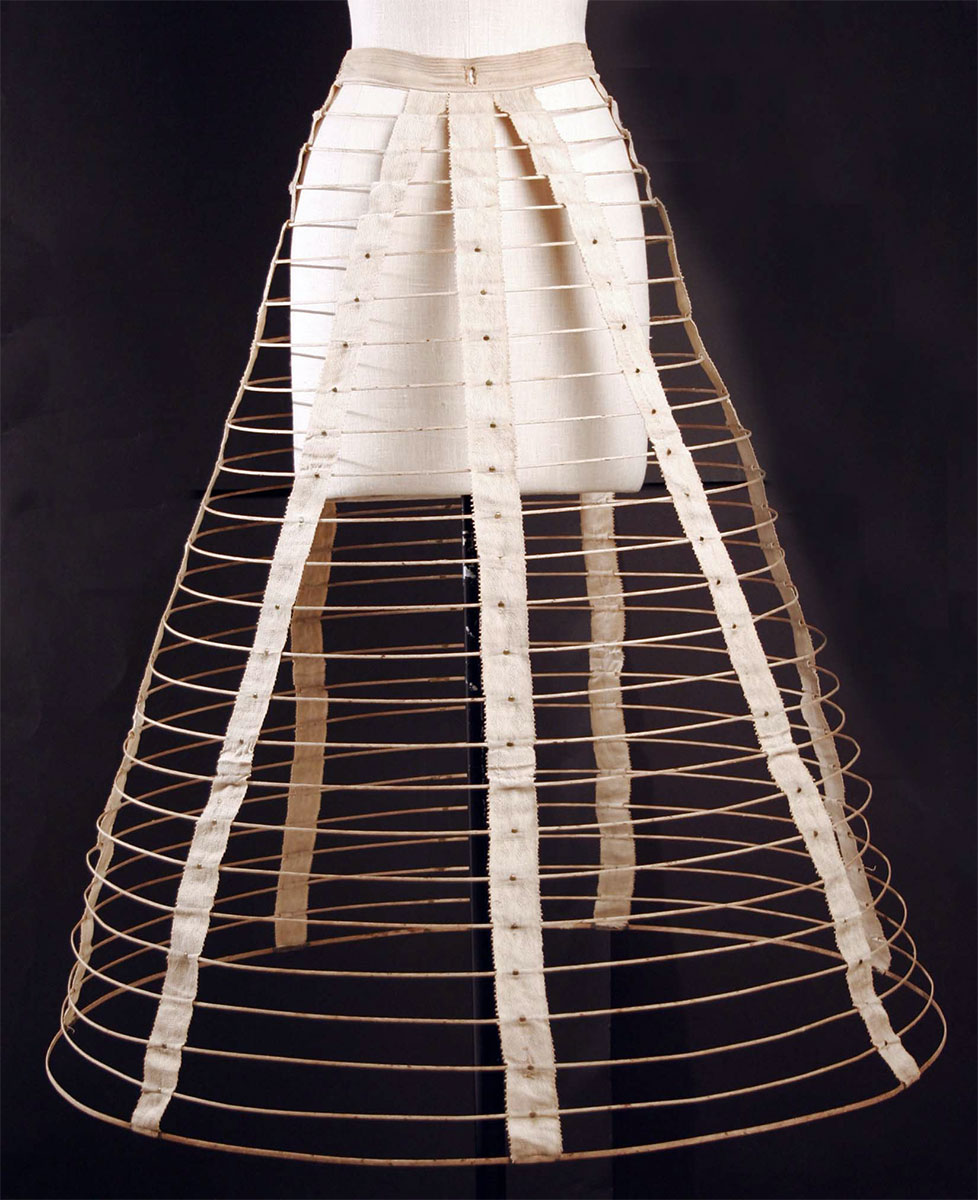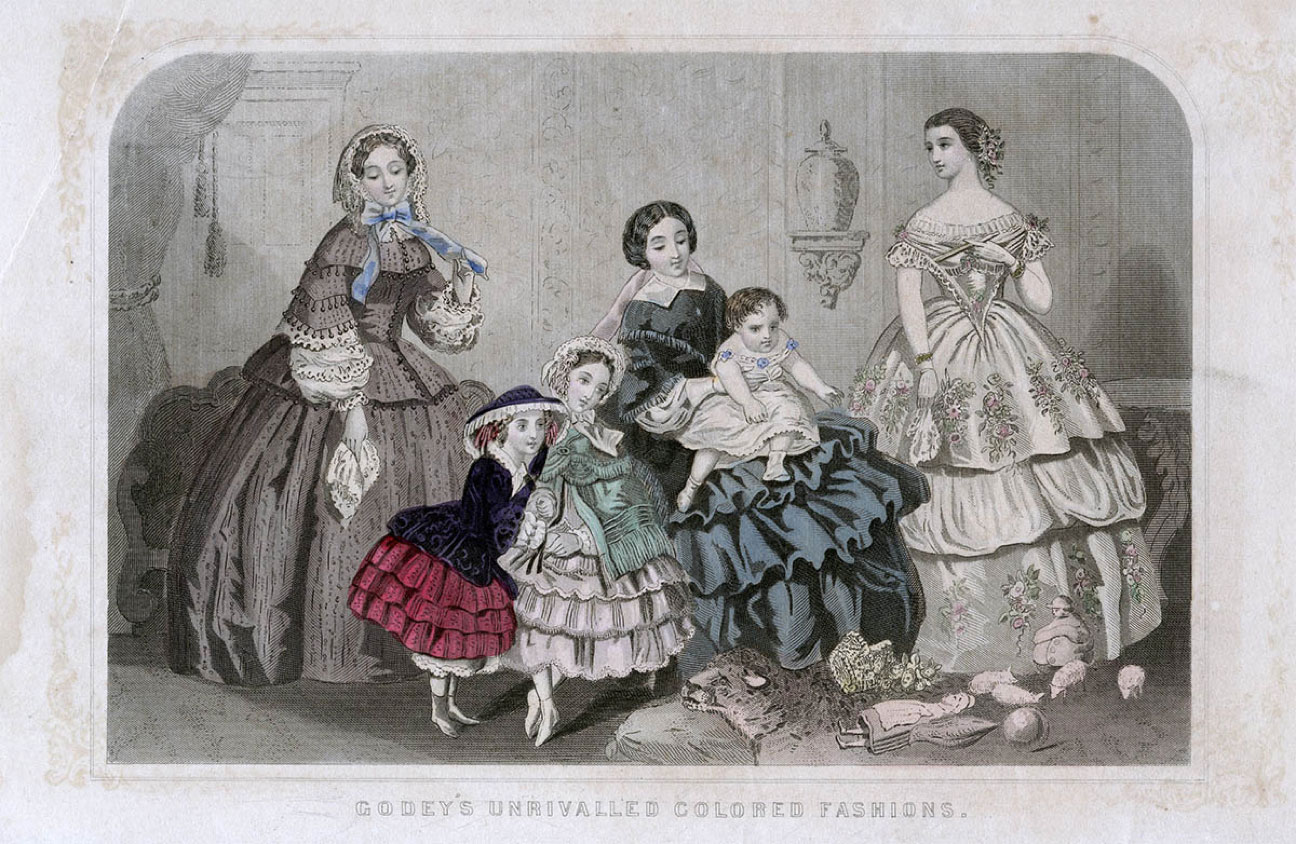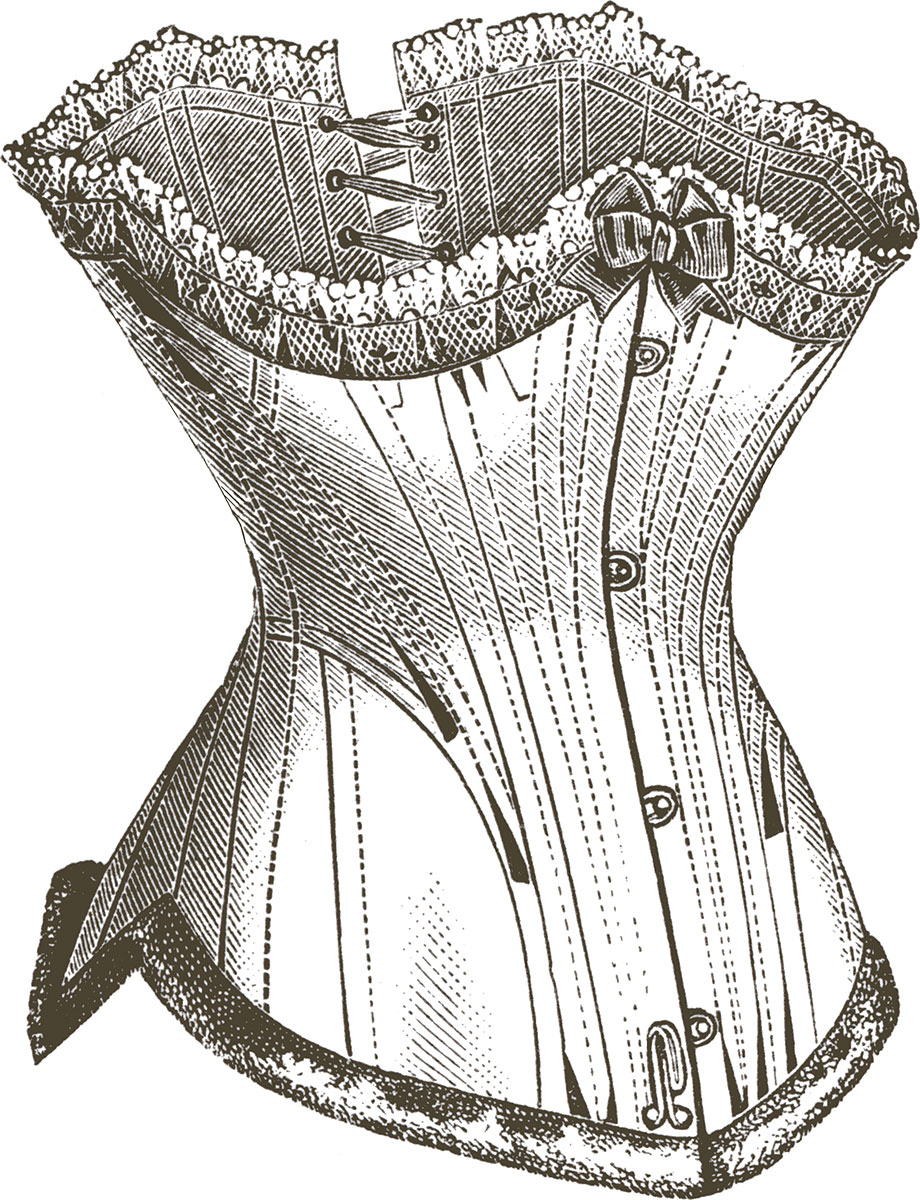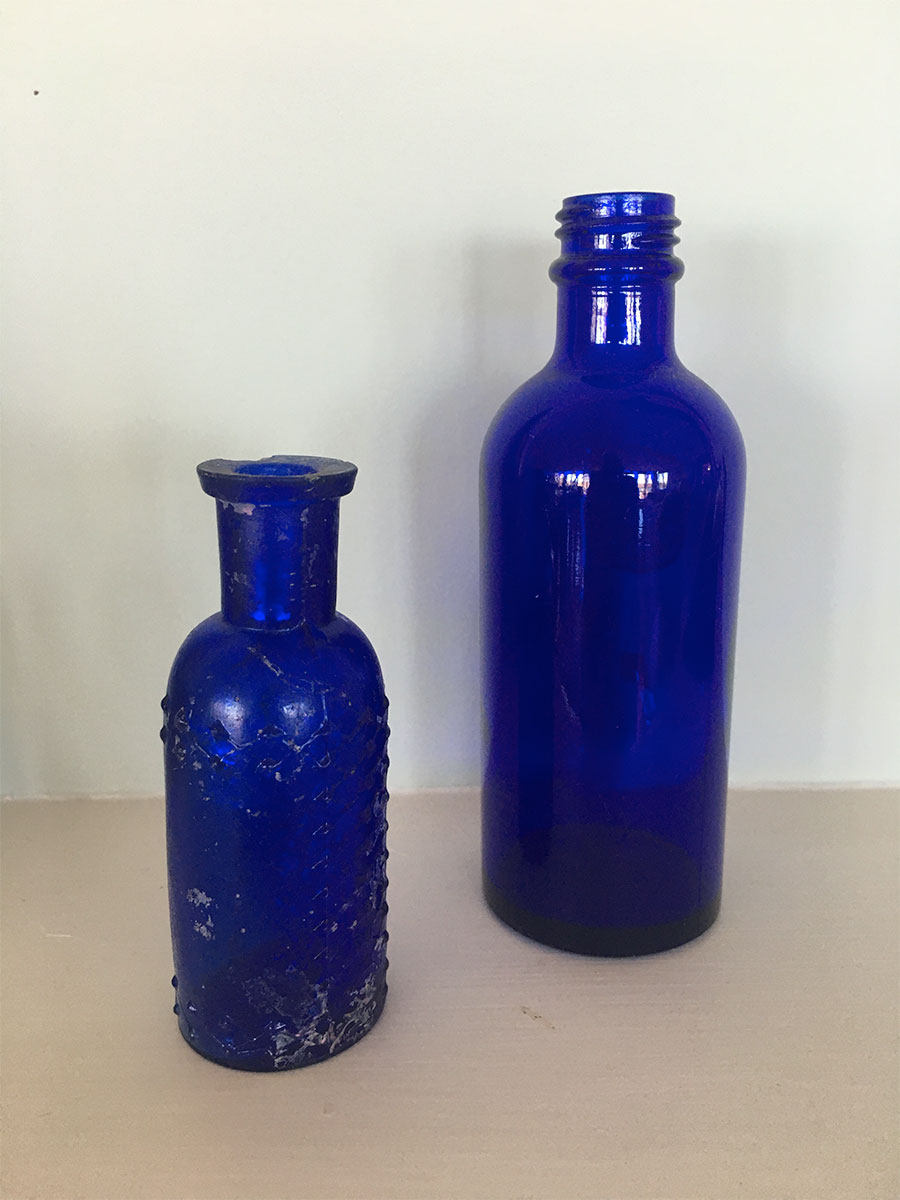Control of Women
A Sample of Etiquette Rules for Ladies
Mid-1800s America
Like women’s clothing in this era, a multitude of rules helped keep a woman in her place. There were rules for men too, but they were not so numerous, or so strict. And the penalties were not as harsh. An unmarried woman who broke the rules could easily become “unmarriageable”, consigning her to the life of an “old maid”. (Often a brother or uncle would take charge of her). There were only a few women like Belle who chose another route entirely – Rebellion!
Read on for More Rules!
- Do not lean back in your chair. Your posture must be erect at all times.
- Do not move your hands while seated. Unless you are sewing or knitting, your hands should rest quietly in your lap.
- Do not run in public. You must also avoid walking quickly, swinging your arms, singing, whistling, laughing, speaking in a loud voice, or calling to someone on the other side of the street.
- Do not raise your voice in conversation. Also do not speak quickly, gesture, shrug your shoulders, or roll your eyes.
- Do not make exclamations such as “Goodness gracious!” or “Mercy!” Laughter should also be avoided.
- Do not go up a flight of stairs in front of a gentleman. It is improper for a man to observe a lady from behind as she climbs. If you encounter a gentleman at the bottom of the stairs, you must stop, bow, and indicate that he should precede you.
- Do not use or listen to suggestive language. If someone uses such language in your presence, you must quickly leave the room and avoid that person in the future.
- Do not have second helpings at dinner or eat everything on your plate. A lady must display a delicate appetite.
- Do not bite your bread. Instead you should break off a single small piece, and place it in your mouth.
- Do not speak with food in your mouth. Avoid taking large mouthfuls that require lengthy chewing. An agreeable female guest must be ready for polite conversation at all times.
- Do not accept wine at dinner. If wine is poured, you should raise the glass to your lips and set it down without drinking.
- Do not address a gentleman by his first name unless he is a relative. Do not use a person’s last name without adding the word “Mister.”
- Avoid being alone in a room with a gentleman unless he is a family member. If you enter a room where a gentleman or group of gentlemen is, you must apologize and leave the room immediately.
- When riding, a lady must show dignity and restraint at all times. You must always ride sidesaddle, never astride. Do not ride alone. Let your companion guide you. He sets the pace and decides where you will go. Do not go faster than your escort or force him to chase you. Do not race or be the first to go over a jump.
- Your riding dress should fit snugly and have a skirt that is full but not too long. Always place yourself on the left side of your escort where the graceful flow of your skirt is seen to its best advantage. Remember, a lady is always on display.
Clothing
A Rebellious Woman describes the clothing a Victorian woman was expected to wear. This was another means of controlling them! It was also why women above a certain social class needed someone to help them get dressed. And it explains why they were incapable of moving quickly. Belle would have worn several petticoats, a hoopskirt, a corset, a chemise, split-up-the middle pantaloons, and stockings under her dress. Most people are familiar with what a corset looks like, but this other strange contraption is called a “cage crinoline”. Women of the time were literally tied up and caged. No wonder Belle, so athletic and energetic, resisted!



Drug Use
Another aspect of life for Victorian women that was both a comfort and a curse was the widespread use of laudanum. This potent combination of 10% powdered opium and 90% alcohol was available without a prescription throughout the 1800s. In the absence of aspirin (not manufactured until the 1890s), laudanum was regularly used as a painkiller and was also a popular sedative. It was thought to be particularly useful in treating “women’s complaints” (as they were known!), such things as menstrual cramps or depression after the death of a young child, an all too regular occurrence in the life of a Victorian mother. Addiction was common and may explain why some women of this era found it relatively easy to be passive and obedient. It is well-documented that both Mary Todd Lincoln and Varina, wife of Confederate President Jefferson Davis, struggled with laudanum addiction.
Measuring just over three inches, the medicine bottle in front is exactly the size that would have been used to dispense laudanum. Very convenient for a lady to slip into her pocket or drawstring purse! I found it while gardening in the backyard of my home in Brooklyn, built in 1851.

